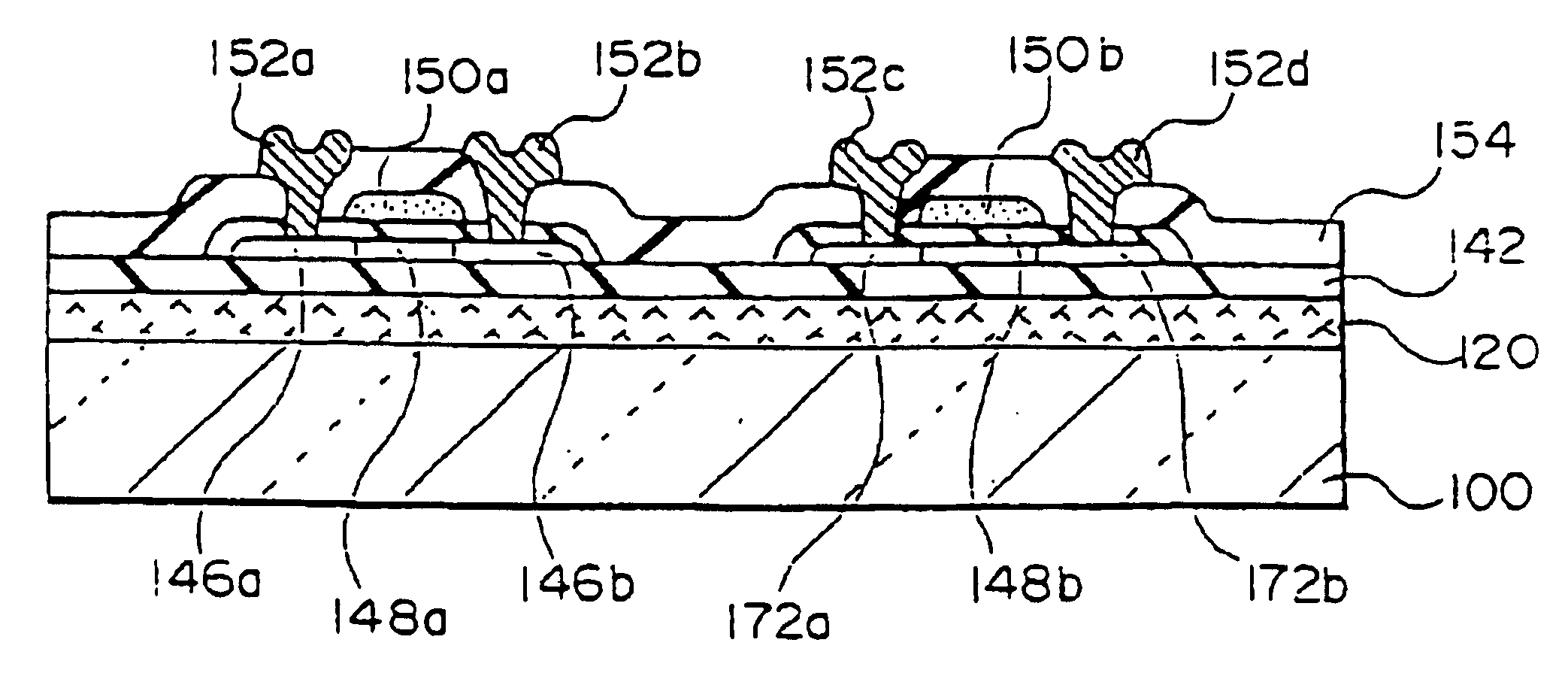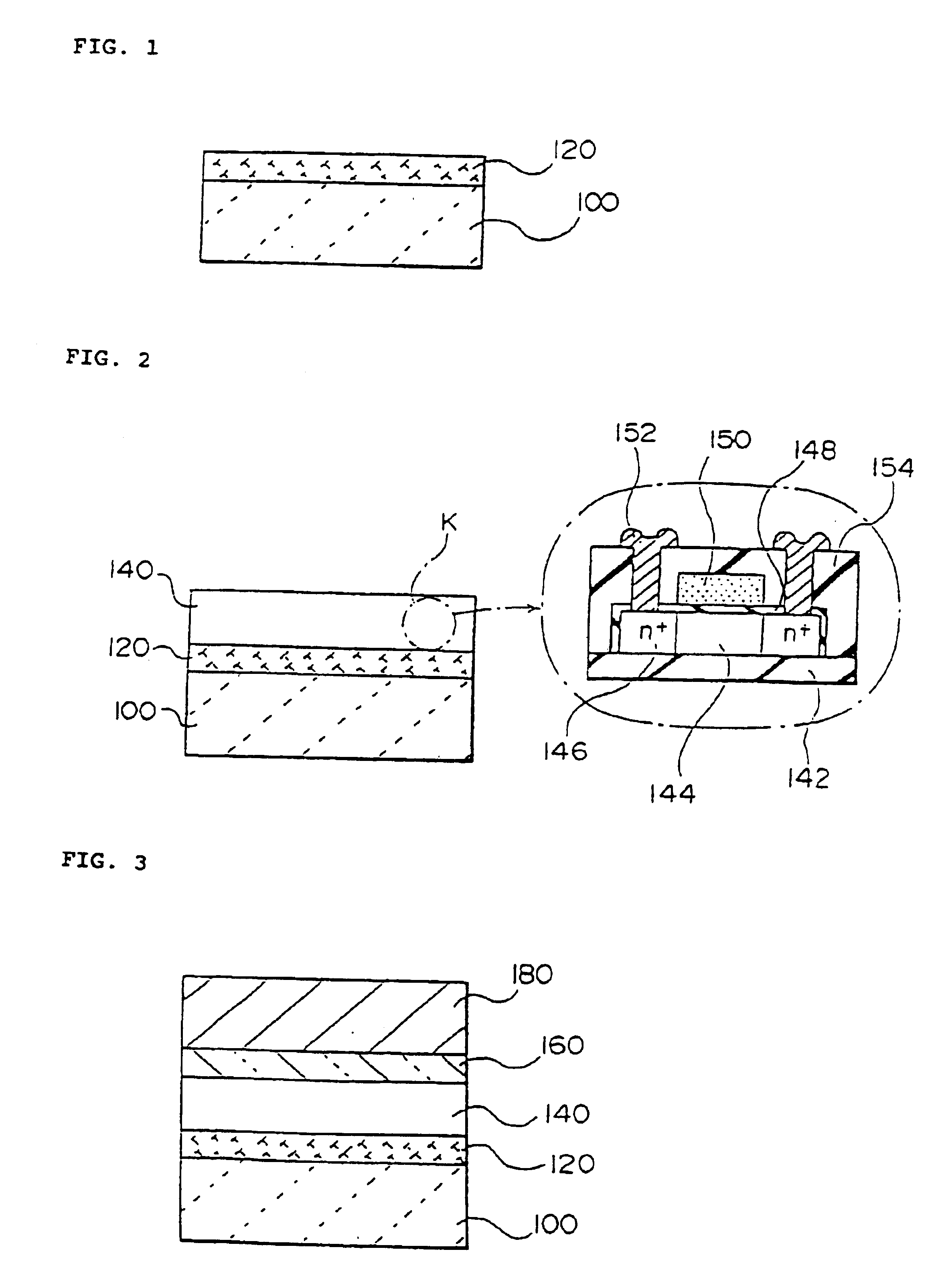Method of separating thin film device, method of transferring thin film device, thin film device, active matrix substrate and liquid crystal display device
a technology of thin film and liquid crystal display, which is applied in the direction of optics, transistors, instruments, etc., can solve the problems of insufficient separation phenomenon of separation layer and laminate relation of layer to be transferred, so as to prevent deterioration in characteristics, accelerate separation phenomenon, and reduce the quantity of light inciden
- Summary
- Abstract
- Description
- Claims
- Application Information
AI Technical Summary
Benefits of technology
Problems solved by technology
Method used
Image
Examples
example 1
[0277]A quartz substrate (softening point: 1630° C., strain point: 1070° C., transmittance for excimer laser: about 100%) of 50 mm long×50 mm wide×1.1 mm thick was prepared, and an amorphous silicon (a-Si) film was formed as a separation layer (laser absorbing layer) on one side of the quartz substrate by the low-pressure CVD method (Si2H6 gas, 425° C.). The thickness of the separation layer was 100 nm.
[0278]Next, a SiO2 film was formed as an intermediate layer by the ECR-CVD method (SiH4+O2 gas, 425° C.) on the separation layer. The thickness of the intermediate layer was 200 nm.
[0279]Next, an amorphous silicon film having a thickness of 50 nm was formed as a layer to be transferred on the intermediate layer by the low-pressure CVD method (Si2H6 gas, 425° C.), and then crystallized by irradiation of laser light (wavelength 308 nm) to form a polysilicon film. Then, the polysilicon film was subjected to predetermined patterning to form regions serving as source, drain and channel of ...
example 2
[0285]The same transfer of a thin film transistor as Example 1 was repeated except that the separation layer comprised an amorphous silicon film containing 20 at % of H (hydrogen) and formed by the separation layer forming process.
[0286]The H content of the amorphous silicon film was adjusted by appropriately setting deposition conditions of the low-pressure CVD method.
example 3
[0287]The same transfer of a thin film transistor as Example 1 was repeated except on layer comprised a ceramic thin film (composition: PbTiO3, thickness: 200 nm) formed by the sol-gel method using spin coating.
PUM
| Property | Measurement | Unit |
|---|---|---|
| temperature | aaaaa | aaaaa |
| temperature | aaaaa | aaaaa |
| temperature | aaaaa | aaaaa |
Abstract
Description
Claims
Application Information
 Login to View More
Login to View More - R&D
- Intellectual Property
- Life Sciences
- Materials
- Tech Scout
- Unparalleled Data Quality
- Higher Quality Content
- 60% Fewer Hallucinations
Browse by: Latest US Patents, China's latest patents, Technical Efficacy Thesaurus, Application Domain, Technology Topic, Popular Technical Reports.
© 2025 PatSnap. All rights reserved.Legal|Privacy policy|Modern Slavery Act Transparency Statement|Sitemap|About US| Contact US: help@patsnap.com



